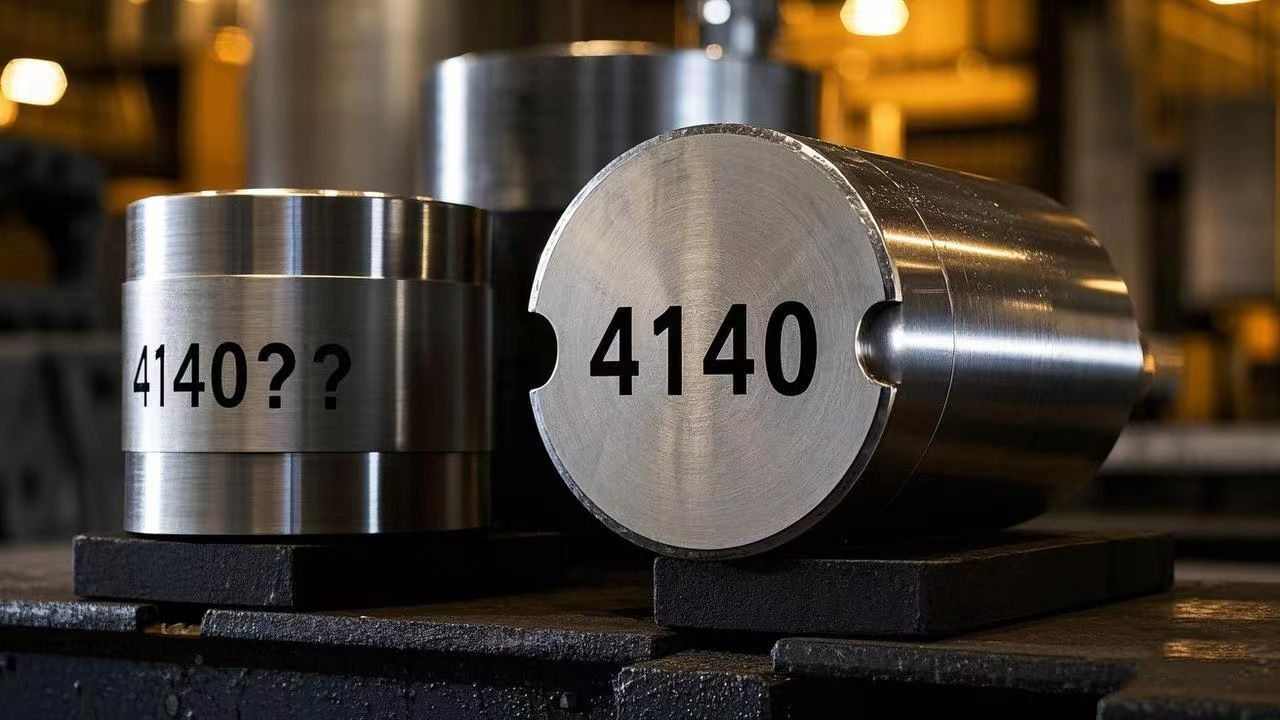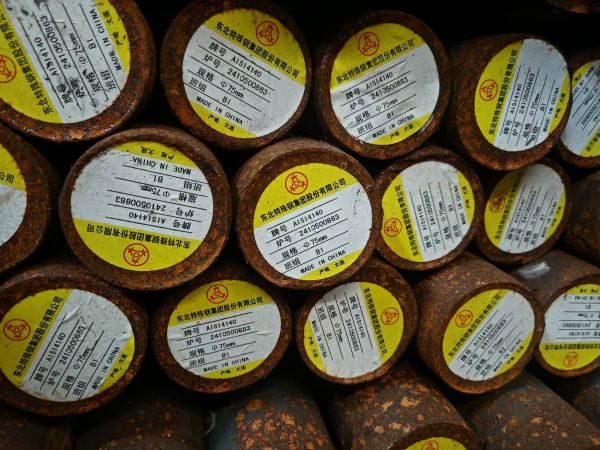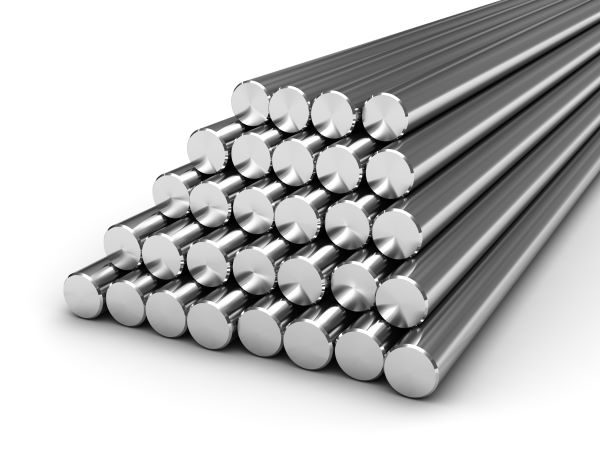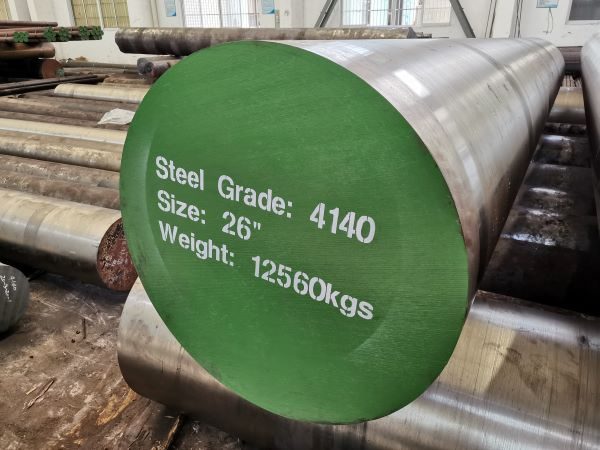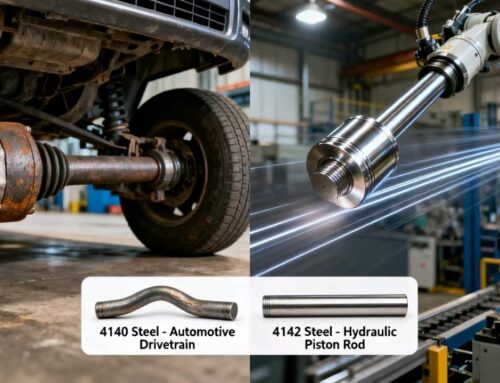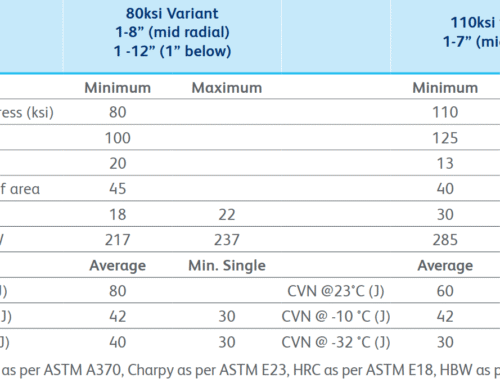Why is It So Important To Detect The Authenticity of 4140 Steel?
In industries such as machinery manufacturing and mold processing, the use of counterfeit or substandard 4140 steel may lead to part breakage, equipment downtime, and even safety accidents.
Real case: A factory used inferior 4140 steel to manufacture gear shafts, which cracked after heat treatment, resulting in direct losses of more than 100,000 US dollars.
Common means of counterfeiting:
- Using low-cost 1045 steel and 5140 steel to impersonate 4140 steel;
- Falsely labeling chemical composition (such as reducing the content of molybdenum and chromium);
- False material report or furnace number label.
Four Simple Detection Methods (no expensive equipment required)
Method 1: Spark identification method – rapid preliminary screening
- Principle: Due to the difference in composition, different steels produce different spark shapes during grinding.
- Operation steps:
- Use an angle grinder to lightly grind the edge of the steel and observe the color, length and bifurcation of the sparks.
- Spark characteristics of 4140 steel:
– The spark beam is dark red, with a small amount of bifurcation at the tail (because it contains molybdenum and chromium to inhibit spark bursting)
– Compared with 5140 steel: the sparks are brighter and have more bifurcations.
– Compared with 1045 steel: the sparks are long and dense, without significant bifurcation.
- Applicable scenarios: Rapid screening at the warehouse site, experience accumulation is required.
Method 2: Hardness test method – verify basic performance
- Principle: The hardness of 4140 steel after quenching and tempering is usually HRC 28-32, which is significantly higher than ordinary carbon steel.
- Operation suggestions:
– Use a portable Leeb hardness tester to measure the surface hardness of the steel;
– If it is not heat-treated, you can compare the hardness of the annealed state (4140 steel is about HB 200, while 1045 steel is about HB 170). - Note: Abnormal hardness may indicate inconsistent composition or defects in heat treatment process.
Method 3: Chemical reagent pitting method – low-cost component verification
- Principle: Determine the content of chromium (Cr) and molybdenum (Mo) by reacting specific reagents with alloy elements.
- Operation steps:
1. Clean the surface of the steel and add 5% nitric acid alcohol solution;
2. Observe the corrosion marks:
– 4140 steel contains chromium and molybdenum, so the corrosion rate is slow and the marks are uniform;
– If the corrosion is too fast or mottled, it may be low-alloy steel. - Cost: The reagent price is about 20 yuan/bottle, which is suitable for small batch testing.
Method 4: Spectral analysis (cooperative third party) – accurate and authoritative report
- Applicable scenarios: large-scale purchases or dispute resolution.
- Recommended solution:
– Use a handheld XRF spectrometer (such as Olympus Delta series) to obtain composition data within 2 minutes;
– 4140 steel standard composition (ASTM A29):
– Carbon (C): 0.38-0.43%, chromium (Cr): 0.8-1.1%, molybdenum (Mo): 0.15-0.25%. - Cost comparison: The third-party testing agency charges about US$50-80 per time, and the batch can be negotiated.
Advanced Anti-counterfeiting Strategy: Eliminate Risks At The Source
- Review supplier qualifications:
– Request the original quality assurance certificate (MTC) of the steel mill to check whether the furnace number is consistent with the physical label;
– Give priority to suppliers certified by ISO 9001 or NADCAP. - Sign a quality agreement:
– Clarify the acceptance standards for composition, hardness, flaw detection, etc., and stipulate compensation clauses for counterfeit goods. - Establish incoming material inspection files:
– Keep samples and inspection records for each batch of steel to facilitate responsibility tracing. - Third-party inspection, obtain authoritative reports
The above four simple methods for detecting the authenticity of 4140 steel, from hardness testing to component analysis, each has its own focus and complements each other. When purchasing 4140 steel, strictly follow these methods to minimize the risk of purchasing fakes. The steel industry is developing rapidly. Only by keeping learning and updating the knowledge of material testing can we accurately select products in a complex market and ensure the smooth progress of the project.
Interactive topic: If you have other tips for identifying the authenticity of 4140 steel, please share them with us!
